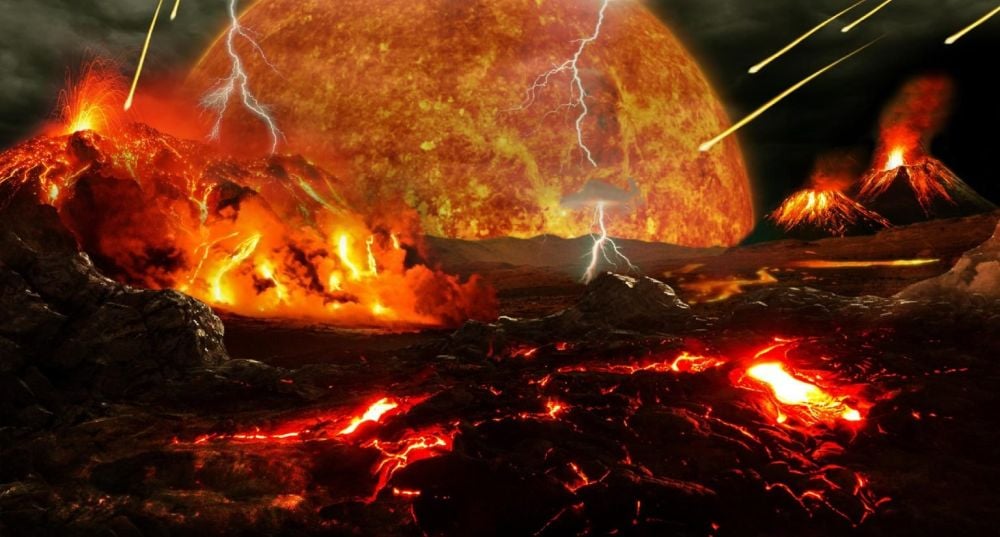Recent research has unveiled the first evidence of the **proto-Earth**, the planet as it existed before a colossal impact with another celestial body created the Moon. Scientists have focused on ancient rocks found in locations such as **Greenland**, **Canada**, and **South Africa** to gain insights into the earliest stages of Earth’s development. The findings, published in **Nature Geoscience**, shed light on the isotopic signatures that differentiate ancient materials from those formed after the significant impact.
The study, led by **Nicole Nie**, an Assistant Professor of Earth and Planetary Sciences at **MIT**, reveals that Earth’s bulk composition cannot be entirely explained by mixing known primitive meteorite compositions. In their paper titled, “Potassium-40 isotopic evidence for an extant pre-giant-impact component of Earth’s mantle,” the researchers suggest that the proto-Earth accumulated materials with distinct isotopic signatures compared to those obtained after the Moon-forming event.
Exploring Ancient Isotopes
The research team analyzed **potassium-40 (40K)** isotopes in a variety of rock samples. They compared ancient and modern terrestrial samples, as well as meteorites, to understand the characteristics of the proto-Earth. The team discovered that the potassium isotopic ratios in their samples differed significantly from typical Earth rocks. Notably, Earth’s potassium is primarily composed of potassium-39 (93.26%) and potassium-41 (6.73%), with only traces of potassium-40 (0.0117%).
The study’s findings indicate that any rock samples exhibiting a potassium isotopic signature distinct from the current Earth composition likely predate the giant impact, marking them as potential remnants of the proto-Earth. During the **Hadean eon**, the early Earth was a molten mass, eventually undergoing a transformative collision with a protoplanet named **Theia**, which played a crucial role in the formation of the Moon.
As part of their investigation, the researchers collected meteorite samples from various global locations, which document the early Solar System’s conditions. Through analysis, they identified discrepancies in potassium isotope ratios between these meteorites and Earth rocks, reinforcing the idea that the ancient samples may represent materials from the proto-Earth.
Significance of Findings
The research revealed that ancient samples from Greenland, Canada, and Hawaiian volcanoes exhibited a surprising deficit of potassium-40, with a notable 65 parts per million less than typical Earth samples. This suggests they possess a unique history, potentially connecting them to the proto-Earth. As impacts have reshaped Earth’s surface over billions of years, the chemical signatures of these ancient materials have remained relatively intact.
To validate their hypotheses, the researchers conducted simulations to model how impacts and geological processes altered potassium-40 concentrations over time. These simulations corroborated their findings, indicating that the ancient samples likely represent remnants of the proto-Earth. Nie expressed enthusiasm for the discovery, stating, “This is maybe the first direct evidence that we’ve preserved the proto-Earth materials.”
Despite the compelling evidence, the researchers noted that the potassium isotopic anomalies in their samples do not entirely match any known meteorite compositions. This discrepancy suggests that previous efforts to define Earth’s original chemical makeup may have overlooked significant components yet to be identified.
Nie emphasized the importance of their work, stating, “Scientists have been trying to understand Earth’s original chemical composition by combining the compositions of different groups of meteorites. But our study shows that the current meteorite inventory is not complete, and there is much more to learn about where our planet came from.”
The implications of this research extend beyond just understanding the early Earth. By uncovering the isotopic signatures of ancient materials, scientists can gain insights into the processes that shaped our planet, paving the way for further exploration and discovery in planetary science. This study not only enhances our understanding of Earth’s origins but also highlights the intricate history that has led to the planet we inhabit today.
